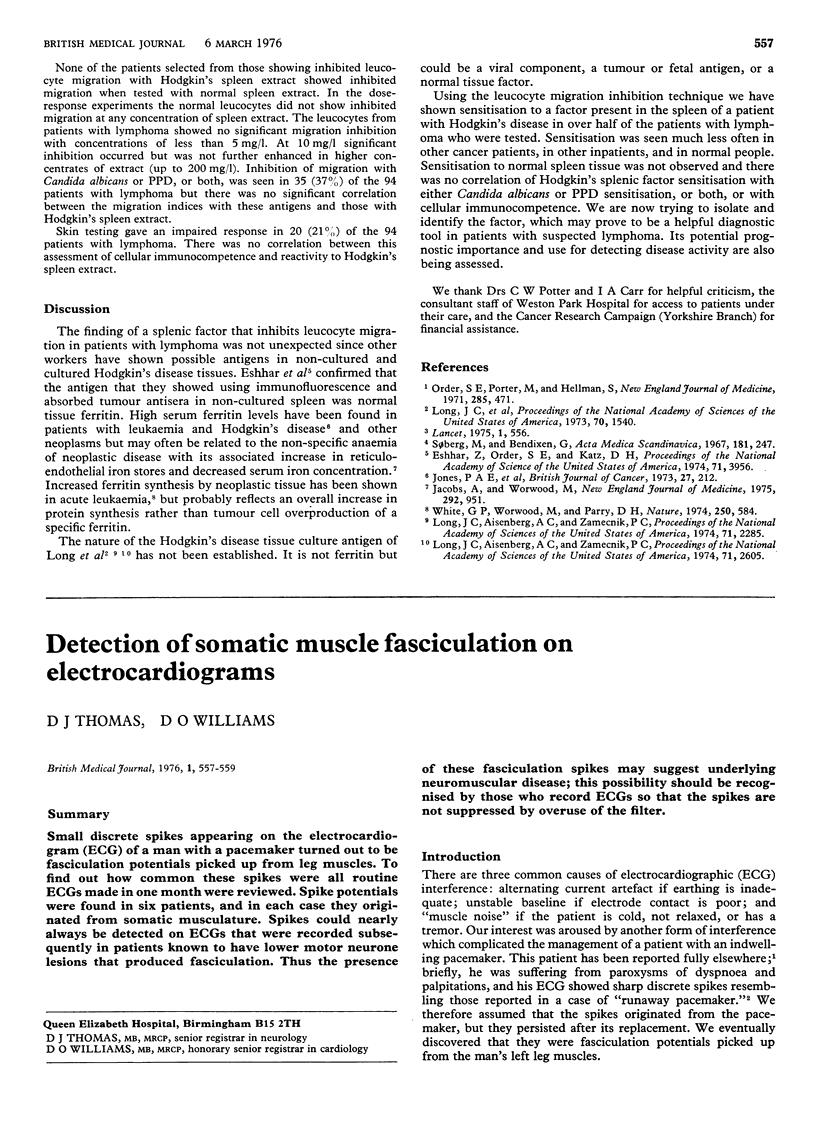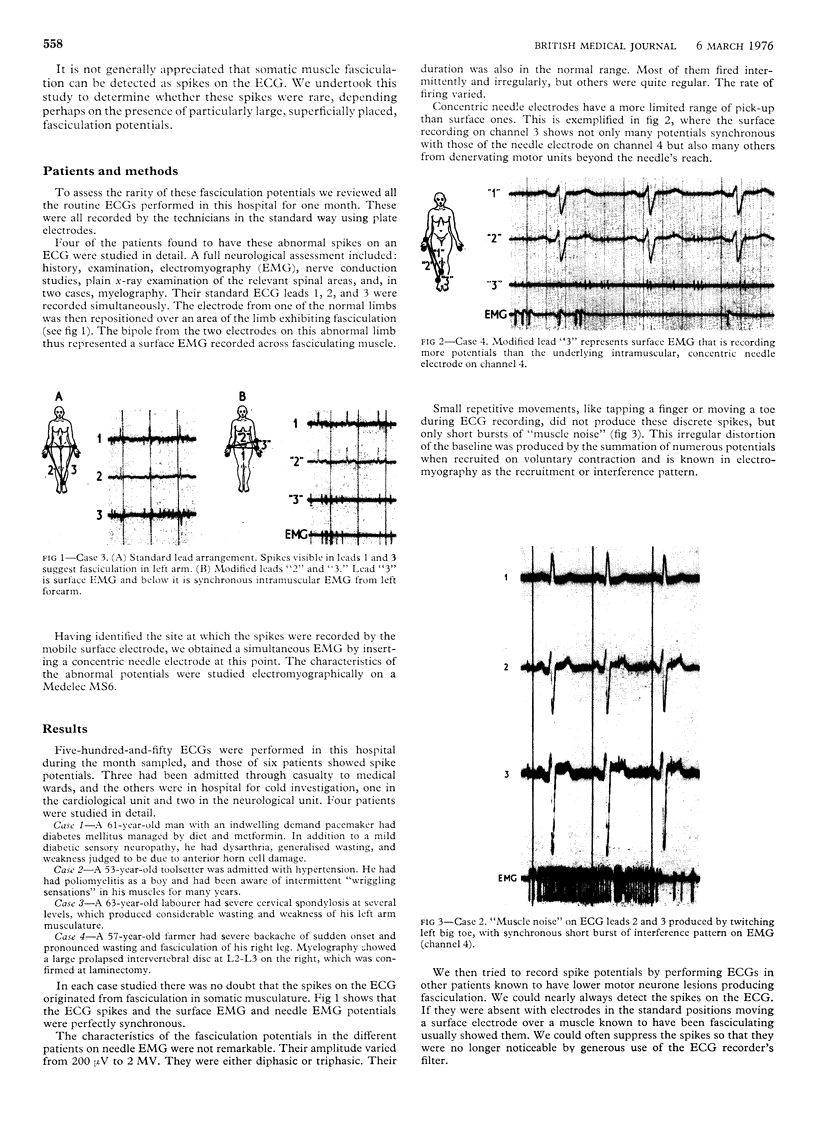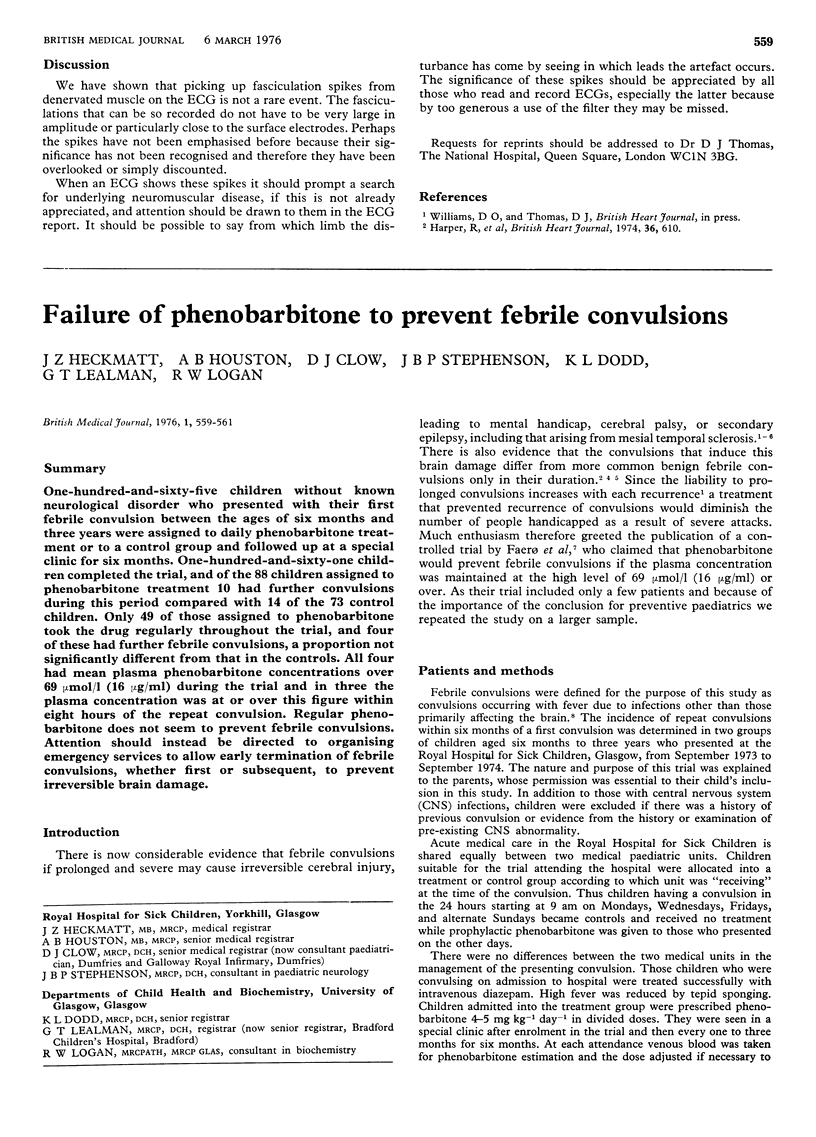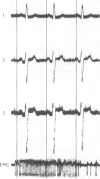Abstract
Small discrete spikes appearing on the electrocardiogram (ECG) of a man with a pacemaker turned out to be fasciculation potentials picked up from leg muscles. To find out how common these spikes were all routine ECGs made in one month were reviewed. Spike potentials were found in six patients, and in each case they originated from somatic musculature. Spikes could nearly always be detected on ECGs that were recorded subsequently in patients known to have lower motor neurone lesions that produced fasciculation. Thus the presence of these fasciculation spikes may suggest underlying neuromuscular disease; this possibility should be recognised by those who record ECGs so that the spikes are not suppressed by overuse of the filter.
Full text
PDF


Images in this article
Selected References
These references are in PubMed. This may not be the complete list of references from this article.
- Harper R., Peter T., Hunt D., Smith D., Sloman G. Runaway pacemaker rhythm after 36 hours of electrical inactivity. Br Heart J. 1974 Jun;36(6):610–612. doi: 10.1136/hrt.36.6.610. [DOI] [PMC free article] [PubMed] [Google Scholar]





